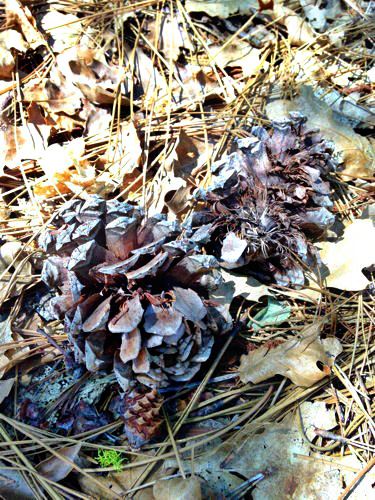Math Games for Kids: Learning About Attributes in Nature
This post is by regular contributor Debi Huang of Go Explore Nature.
On a recent hike with my two young sons, I had a chance to take one of the fun math games Christie has shared on learning about attributes outside and into nature. And guess what? It was a huge hit!
Attributes are the characteristics used to describe an object – things like color, shape and number. Christie’s original game used Uno cards to encourage children to think and talk about similarities between object attributes, in this version we looked for similarities among items we encountered in nature – things like rocks, sticks, flowers, leaves and so on.
Nature’s Attributes Maths Game
One great thing about taking attribute learning outside is that all of the necessary materials are already there. We played this game while hiking in the mountains, but it could also be played on a neighborhood walk or even in your own backyard.
Recommended age: 5+ years (younger kids can certainly play with some help from an adult)
To play:
1. Decide who will go first. Since the game was new to us, I decided to start things off and we continued from eldest to youngest. This helped my 6 year old (our youngest player) get a sense of how the game worked before taking a turn.
2. To start the game, the first player points to an item, such as a tree, stick, flower or rock. While doing so, the player says exactly what he or she is seeing. For instance, “one brown leaf.”
3. Play continues with the next person looking for an item that matches the first in at least one way – either in color, number or type. Our leaf was followed up by the discovery of “two brown pinecones.”
4. Continue playing in this way as long as your child likes. If someone gets stuck and can’t find a way to match an attribute, simply begin anew. The biggest challenge we found was that sometimes instead of being precise about numbers, we needed to refer to multiple items simply as a “bunch.”
To extend the fun:
- Ask older kids to refer to items by specific names. For example, my 9 year old found “one purple lupine” instead of simply “one purple flower.”
- Take pictures of your finds. When you get home, print the pictures out, laminate them and use them to replay the game indoors. You may discover new ways to connect the items you originally saw.
How do you and your children like to take learning outdoors?
If you’re looking for other math games to play outside, don’t miss:
- Counting Items in Nature
- Digging for Buried Treasure
- Number Learning in Nature
- Making Magical Mathematical Potions
Or check out our Learning Mathematically category for all of our playful math ideas.



